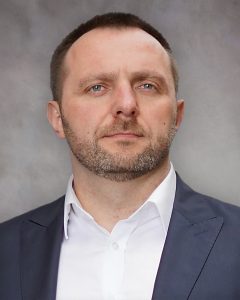
You recently attended ThermProcess in Dusseldorf. What kind of reactions to your products did you get from the attendees?
It was quite a good event for us. We had many visitors coming, both existing customers as well as new ones. They liked what we presented at our booth very much, especially all the green technologies that can support our customers while lowering their carbon footprint. What we see in the market is absolutely related to cost and process improvement, while meeting the new initiatives of green transformation.
We also see this in the heat-treatment industry, which is quite conservative in many aspects, especially with customers linked with the automotive industry and commercial treaters. We see more of that trend going in Europe than in the U.S. so far. But when you consider the current supply chain and the global link of all the suppliers, sooner or later, they will have to come into this global trend.
What are the ecological advantages of vacuum heat treating?
Vacuum heat treatment equipment and vacuum technologies are our main business lines. The process uses a lower consumption of process gases, but also a lower consumption of energy since very often the process takes a shorter time. Thanks to that, we can increase the overall productivity. Vacuum furnace compared to, let’s say, gas carburizing equipment is very flexible, because you can shut it down anytime you don’t need to use it, and you can switch it on again anytime you like. With gas carburizing, the equipment needs to be saturated with carburizing gas, and you have to maintain the carbon potential. Switching to vacuum is a greener technology, which means close-to-zero emissions, a lower energy consumption, and lower process gas consumption. And if you add the possibility to replace the oil quenching with the high-pressure gas quenching, then you can also eliminate the need to make a post-processing washing of the oiled parts.
What other technologies can SECO/WARWICK offer that help reduce the customer’s carbon footprint?
Last year we promoted a new model of furnace. We call it a Pit-LPC — pit low pressure carburizing furnace — dedicated for heat treatment and carburizing in the low pressure of large sized gears — especially for large gears where a thicker effective case depth of the carburizing layer is needed. The process takes a very long time — practically counted in hours. We can reduce the process by 50 percent or even more if we switch to low pressure carburizing. This is a big advantage to our customers. We have also developed the next stage of our ZeroFlow® nitriding process. We call it ZeroFlow Feedback Control, where we can have a better control of the nitriding process and optimized process time.
Going further, we have implemented 4D Quench® technology. We just provided this solution to an aviation customer, who is very happy to use our technology; 4D Quench can replace the press quenching process, where you can do the hardening of gears by using the high-pressure gas quench. We can control the distortion level of the quenched gears, so the post-processing of machining is not required nor is washing of the parts, because you’re not using oil.
The 4D Quench is a fairly new development, correct?
This technology was developed some years ago and was originally dedicated for automotive industry. As a next stage, we started developing it as a solution for larger and precision gears dedicated to aviation transmissions like we can find in helicopters and planes. We know it is far more difficult to control the distortion of the larger diameter of gears, and we are able to achieve very good results with our advanced 4D Quench technology.
How can going greener help with your customer’s bottom line?
One of the reasons why we, as a company, are involved with a green transformation is because it is our mission, but it’s also because we see more customers following in the same direction. They want to do it because, being a green company, you can serve more customers. And it is not just that you are getting greener, but you can also save costs. This is why our customers want to implement green technologies that can positively affect their bottom line.
What you’re saying is, there was a necessity to become greener, but in doing so, they discovered they could actually save money?
Yes. If someone is a part of the global supply chain and is following all the directions given by the European Union (e.g. “Fit for 55 strategy”) along with more international organizations and institutions, sooner or later they will need to report the direction they’re going to lower their carbon footprint. This is what our customers are seeing: From one side, financial benefits, but from the other side, they see a new perspective to enter new markets or to simply maintain existing customers.
What other ecological activities are you involved with?
Besides helping our customers through the solutions we provide them, we are also, as a company, following the same direction. We have installed the photovoltaic system, we are switching our fleet of cars to electrical cars or we use the rainwater to water our grass in the company, just to mention a few of our pro-ecological measures. These kinds of activities are also showing our associates that we are not only providing and helping our customers be green, but SECO/WARWICK as a group is also a green company.
MORE INFO www.secowarwick.com

























